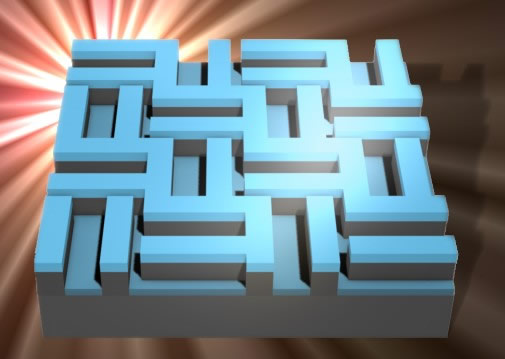Scientists see the light: new solar panel design could lead to wider use of renewable energy

Designing solar panels in checkerboard lines increases their ability to absorb light by 125 per cent, a new study says.
Researchers say the breakthrough could lead to the production of thinner, lighter and more flexible solar panels that could be used to power more homes and be used in a wider range of products.
The study – led by researchers from the University of York and conducted in partnership with NOVA University of Lisbon (CENIMAT-i3N) - investigated how different surface designs impacted on the absorption of sunlight in solar cells, which put together form solar panels.
Electricity
Scientists found that the checkerboard design improved diffraction, which enhanced the probability of light being absorbed which is then used to create electricity.
The renewable energy sector is constantly looking for new ways to boost the light absorption of solar cells in lightweight materials that can be used in products from roof tiles to boat sails and camping equipment.
Solar grade silicon - used to create solar cells – is very energy intensive to produce, so creating slimmer cells and changing the surface design would make them cheaper and more environmentally friendly.
Dr Christian Schuster from the Department of Physics said: “We found a simple trick for boosting the absorption of slim solar cells. Our investigations show that our idea actually rivals the absorption enhancement of more sophisticated designs - while also absorbing more light deep in the plane and less light near the surface structure itself.
“Our design rule meets all relevant aspects of light-trapping for solar cells, clearing the way for simple, practical, and yet outstanding diffractive structures, with a potential impact beyond photonic applications.
“This design offers potential to further integrate solar cells into thinner, flexible materials and therefore create more opportunity to use solar power in more products.”
Carbon footprint
The study suggests the design principle could impact not only in the solar cell or LED sector but also in applications such as acoustic noise shields, wind break panels, anti-skid surfaces, biosensing applications and atomic cooling.
Dr Schuster added: “In principle, we would deploy ten times more solar power with the same amount of absorber material: ten times thinner solar cells could enable a rapid expansion of photovoltaics, increase solar electricity production, and greatly reduce our carbon footprint.
“In fact, as refining the silicon raw material is such an energy-intensive process, ten times thinner silicon cells would not only reduce the need for refineries but also cost less, hence empowering our transition to a greener economy.”
Data from the Department for Business, Energy & Industrial Strategy shows renewable energy – including solar power - made up 47% of the UK’s electricity generation in the first three months of 2020.
Comments (1)
Featured Product

